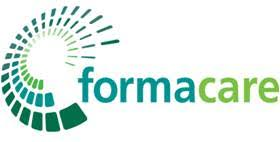CLP
Regulation for substances and mixtures (1272/2008/EC) harmonises the hazard classification and labelling of chemical substances and mixtures in the European Union and the European Economic Area. CLP entered into force on 20 January 2009. The deadline for substance classification under CLP was 1st December, 2010. On 1st June, 2015, the new CLP Regulation replaced the previous classification rules under the Dangerous Substances Directive (Directive 67/548/EEC and the Dangerous Preparations Directive (1999/45/EC). CLP aligns the European Union with the Globally Harmonised System (GHS) for the classification and labelling of substances. The GHS is a global initiative to:
- Define health, physical and environmental hazards of chemicals;
- Create classification processes that use available data on chemicals for comparison with the defined hazard criteria; and
- Communicate hazard information, as well as protective measures, on labels and Safety Data Sheets (SDS)
CLP only assesses the hazardous properties of chemical substances, based on available scientific data, to establish hazard classifications. The legislation is not intended to evaluate whether a hazardous substance poses an actual risk to humans in real-life conditions. Under CLP, a Member State, or the European Chemical Agency (ECHA) upon request of the European Commission, or a company may submit a dossier for the harmonised classification and labelling (Harmonised C&L) of a substance. In cases of re-classification, only authorities can initiate a procedure.
Formaldehyde and CLP
Formaldehyde is one of the most thoroughly evaluated substances.
In 2014, Formaldehyde was reclassified as a Carcinogen Category 1B. According to the CLP Regulation, Category 1B substances are presumed to have carcinogenic potential for humans and classification is largely based on animal evidence as opposed to substances falling under Category 1A.
The new classification entered into force in June 2014 when published in the Official Journal of the European Union. However, authorities foresaw a transition period allowing suppliers to adapt to the new classification. The European Commission proposed to expand the transition period until 1st January, 2016. The classification of formaldehyde as Carcinogen Category 1B is today fully in place and a regulatory reality for the value chains.
Background and rationale
- When evaluating the carcinogenicity of substances, European regulators take into account evidence from studies on both animals and humans. Since 1980, there have been over 100 studies investigating the potential link between formaldehyde and cancer.
- On 28 September 2011, France submitted a dossierto ECHA for the reclassification and labelling of formaldehyde as Category 1A ‘substances known to have carcinogenic potential’. There was then a 45-day public consultation that began in October 2011. On behalf of the formaldehyde industry, Formacare submitted a to the public consultation on the scientific merits of France’s proposal for harmonised C&L.
- After the public consultation, the rapporteur appointed on behalf of the Risk Assessment Committee (RAC) of ECHA, Germany, began the review of the formaldehyde dossier. On 7 December 2012, ECHA announcedthe adoption of a scientific opinion of the RAC to reclassify formaldehyde as carcinogen 1B “presumed human carcinogen” and germ cell mutagen category 2. In reaching their opinion, the RAC found that the science relating to human exposure could not support France’s proposal to classify formaldehyde as carcinogen category 1A, and they instead agreed that category 1B was warranted. The proposed classification is based on presumed link with nasopharyngeal cancer, an extremely rare form of cancer in Europe.
- On 20 December 2013, the EU REACH Committee adopted a decision to reclassify formaldehyde as a category 1B carcinogen. This decision was implemented through the 6th Adaptation to Technical Progress (ATP) to the CLP Regulation publishedin the Official Journal of the European Union on 6 June 2014.
- On 25 November 2014, the EU REACH Committee agreed via written procedure to postpone the deadline for the transition period until 1st January 2016. On 23 March 2015, the decision was formally confirmed with the publication of the Commission Regulation 2015/491.The industry had therefore until 1st January 2016 to comply with the new classification.
Learn more:
